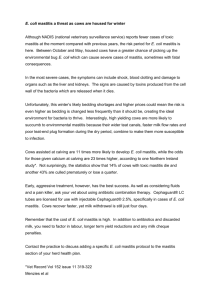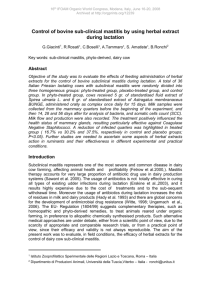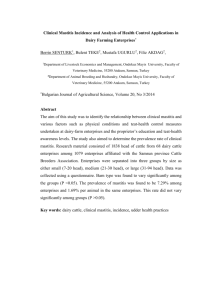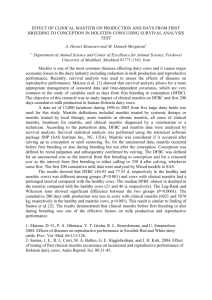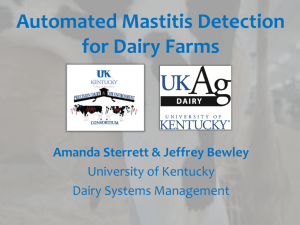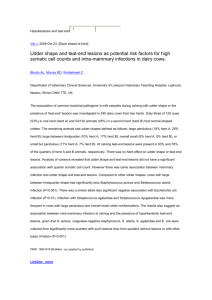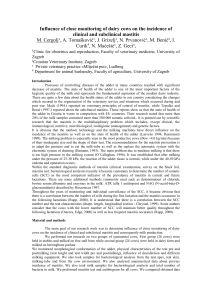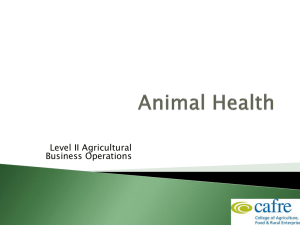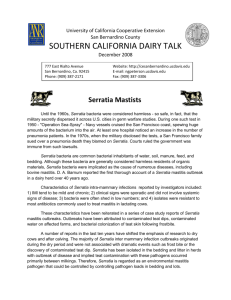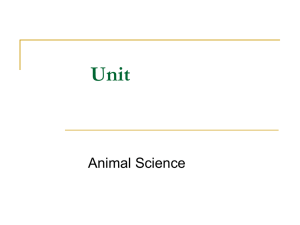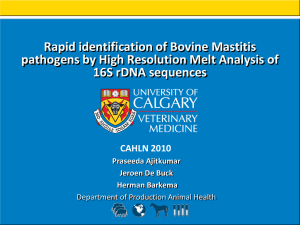The effect of external teat seals on mastitis incidence during the dry
advertisement
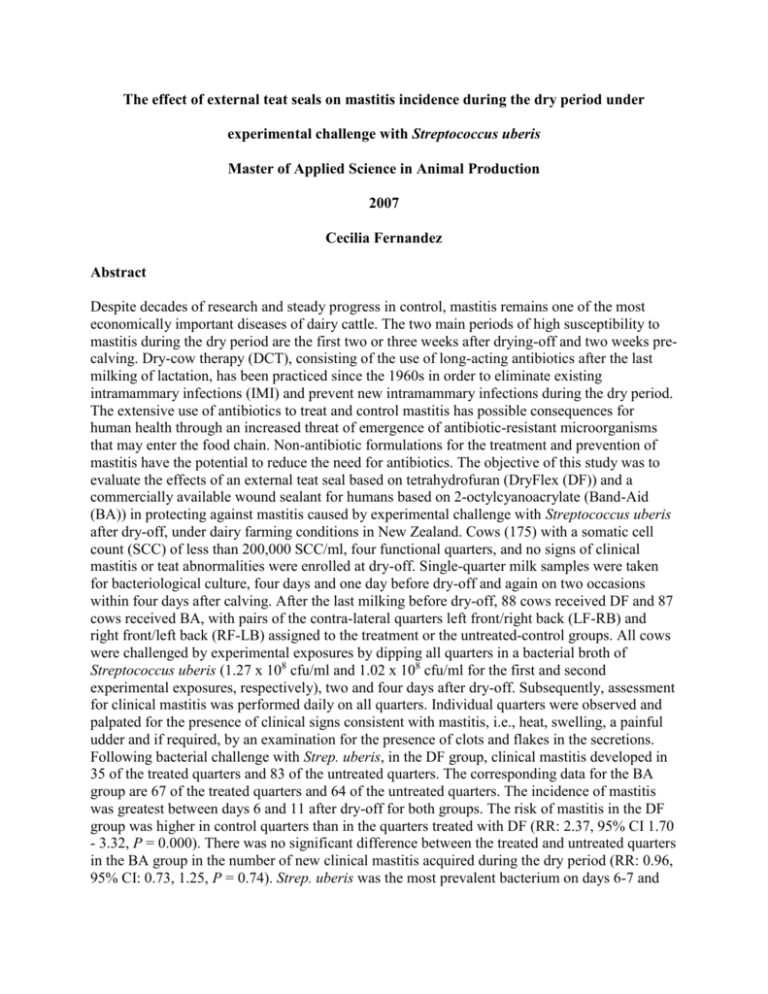
The effect of external teat seals on mastitis incidence during the dry period under experimental challenge with Streptococcus uberis Master of Applied Science in Animal Production 2007 Cecilia Fernandez Abstract Despite decades of research and steady progress in control, mastitis remains one of the most economically important diseases of dairy cattle. The two main periods of high susceptibility to mastitis during the dry period are the first two or three weeks after drying-off and two weeks precalving. Dry-cow therapy (DCT), consisting of the use of long-acting antibiotics after the last milking of lactation, has been practiced since the 1960s in order to eliminate existing intramammary infections (IMI) and prevent new intramammary infections during the dry period. The extensive use of antibiotics to treat and control mastitis has possible consequences for human health through an increased threat of emergence of antibiotic-resistant microorganisms that may enter the food chain. Non-antibiotic formulations for the treatment and prevention of mastitis have the potential to reduce the need for antibiotics. The objective of this study was to evaluate the effects of an external teat seal based on tetrahydrofuran (DryFlex (DF)) and a commercially available wound sealant for humans based on 2-octylcyanoacrylate (Band-Aid (BA)) in protecting against mastitis caused by experimental challenge with Streptococcus uberis after dry-off, under dairy farming conditions in New Zealand. Cows (175) with a somatic cell count (SCC) of less than 200,000 SCC/ml, four functional quarters, and no signs of clinical mastitis or teat abnormalities were enrolled at dry-off. Single-quarter milk samples were taken for bacteriological culture, four days and one day before dry-off and again on two occasions within four days after calving. After the last milking before dry-off, 88 cows received DF and 87 cows received BA, with pairs of the contra-lateral quarters left front/right back (LF-RB) and right front/left back (RF-LB) assigned to the treatment or the untreated-control groups. All cows were challenged by experimental exposures by dipping all quarters in a bacterial broth of Streptococcus uberis (1.27 x 108 cfu/ml and 1.02 x 108 cfu/ml for the first and second experimental exposures, respectively), two and four days after dry-off. Subsequently, assessment for clinical mastitis was performed daily on all quarters. Individual quarters were observed and palpated for the presence of clinical signs consistent with mastitis, i.e., heat, swelling, a painful udder and if required, by an examination for the presence of clots and flakes in the secretions. Following bacterial challenge with Strep. uberis, in the DF group, clinical mastitis developed in 35 of the treated quarters and 83 of the untreated quarters. The corresponding data for the BA group are 67 of the treated quarters and 64 of the untreated quarters. The incidence of mastitis was greatest between days 6 and 11 after dry-off for both groups. The risk of mastitis in the DF group was higher in control quarters than in the quarters treated with DF (RR: 2.37, 95% CI 1.70 - 3.32, P = 0.000). There was no significant difference between the treated and untreated quarters in the BA group in the number of new clinical mastitis acquired during the dry period (RR: 0.96, 95% CI: 0.73, 1.25, P = 0.74). Strep. uberis was the most prevalent bacterium on days 6-7 and from day 9 onwards, and it was detected in 160 (95%) single-quarter milk samples. The use of pulsed-field gel electrophoresis (PFGE) in a subset of isolates showed that 11 of 19 of the intramammary infections found between six and eleven days after dry-off (peak of infection) were caused by the challenge strain. DryFlex was visible on 50% of the teat-ends for four days. The average number of days for which the teat-ends remained covered with DF was 5.2 for all quarters. The experimental challenge model developed and used in this study appeared to be successful in generating intramammary infections during the dry period of dairy cows and proved a robust test of teat seals. The application of DryFlex at the end of lactation was beneficial in reducing mastitis in dairy cows after dry-off. The octylcyanoacrylate used in the present study showed no benefit in reducing the incidence of mastitis after dry-off when compared with quarters left untreated. It would appear from the results of this experiment that a teat seal of the DryFlex type would have a role to play in the prevention of mastitis during the early dry period. However, further work is required to improve the persistence of DryFlex on teats of non-lactating dairy cows.
